Rich and Poor
Favela is the Brazilian word for slum or shanty town. Last month, I visited Rocinha, the largest favela in the Rio de Janiero through a visit arranged by Marcelo Armstrong’s Favela Tours, which donates proceeds to local schools and charities.
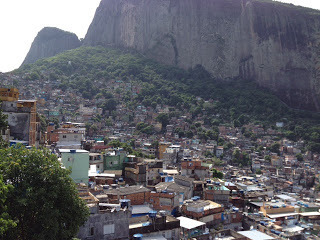 Rocinha
RocinhaAbout 20 percent of Rio’s poorest citizens live in favelas like Rocinha.
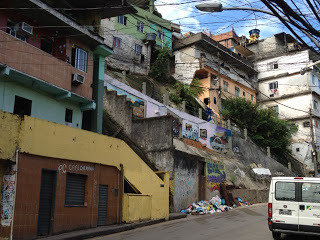
These places have been historically neglected by the government and official institutions. Residents usually do not have title to the land where they live. And they often lack access to basic services like health care, education, jobs, sanitation and police protection.
Drug gangs are the de facto authority in many favelas, gangs with names like the Red Command, the Third Command and the Friends of the Friends. These gangs grew with the rise of cocaine production in Latin America during the 1970s and 80s. They learned many of their fighting tactics in prison from left-wing guerrillas who fought against Brazil’s military dictatorship during that period.
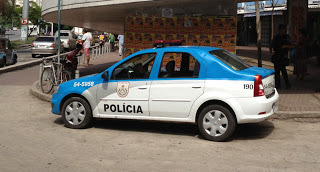
The gangs have a strong incentive to keep favelas safe for the local residents so that police don’t come in and interfere with their narcotics trade. According to Armstrong’s guides, many favela residents feel safer in gang-controlled areas and trust the gangs more than the police or the local government. Rocinha was the scene of a police and military operation in 2011 to take control away from organized criminal gangs. In the past two years, the police are making a concerted effort at community outreach, trust building and a constant local presence in Rocinha.
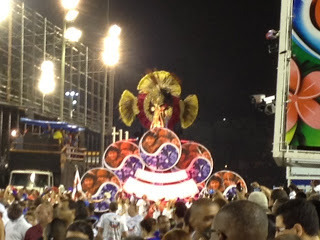 Many of the famous samba schools from Rio's Carnivale are based in favelas
Many of the famous samba schools from Rio's Carnivale are based in favelas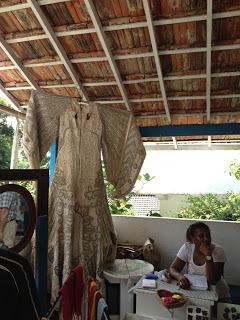
Many residents feel a strong sense of pride and community in their favela and choose to stay there even when they have the economic means to leave. Favelas are also a major source of lively dance, music, culture and the arts that make Rio legendary . Many of the famous samba schools that participate in Rio’s world famous carnivale are based in the favelas.
The word favelacomes from a bloody period in Brazilian history following the end of slavery in that country during the late 19th century. During that time, a charismatic, mystical preacher named Antônio Vicente Mendes Macie wandered through poor and disenfranchised areas in northeastern Brazil. He gathered a following of racially-diverse, destitute believers who settled within him in a town called Canudos.The government brought in outside soldiers to destroy Canudos. For slaughtering the upstarts, the soldiers were promised land in Rio de Janiero where they could build homes and live.After killing the preacher and thousands of followers in the Canudos war, the government broke its promise to the soldiers and did not give them title to land in Rio. They decided to settle in the land anyway, naming the area after the favela plant in Bahia where they slept during the war against the preacher’s followers in Canudos.
The favelas are still scenes of struggle and violence, but according to Armstrong, conditions have gotten much better in Rocinha during the past decade in Brazil. The government has invested in basic services like garbage collection. Children attend school. NGOs and federal authorities are trying to eradicate tuberculosis and other diseases that persist in some neighborhoods.Like many favelas, Rocinha sits next to one of the wealthiest neighborhoods in Brazil. Luxury mansions with palm-lined gardens and security cameras sit across the street from shanty towns where people like in concrete mazes next to open sewage canals.We visited a community school called Para Ti, which was founded for favela children by a late Italian auto executive who ran the Fiat’s Brazil operations and lived in an exclusive estate less than a block away from a favela.
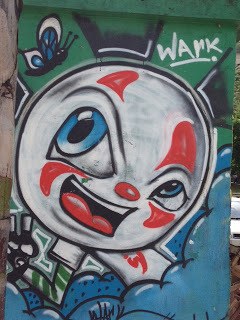
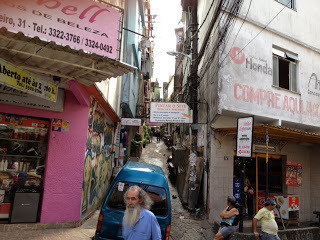
The challenge of the favelas is not uniquely Brazilian. You could find similar juxtaposition of rich and poor neighborhoods in Los Angeles or so many parts of the world. Inequality and poverty are age old problems and may never go away. The super-rich in any society have the ability have the means to acquire and consume more material objects... more houses, cars, boats and jewelry. But with climate change and resource depletion, we as a species will have to curb our addiction to material consumption in the future.
The challenge is how we create basic standards of universal rights – to health, safety, education, the right to work under decent conditions – so that is doesn’t matter whether you are rich or poor and you can have decent life either way.
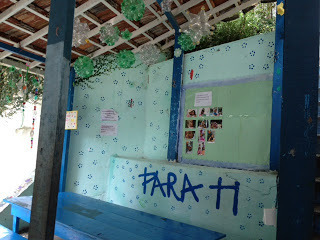 Para Ti Community School
Para Ti Community School 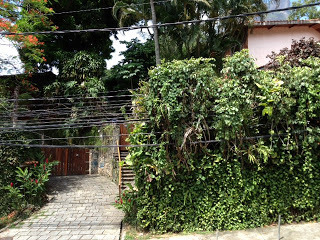 Wealthy estates sit behind barbed wire across the street from a favela
Wealthy estates sit behind barbed wire across the street from a favela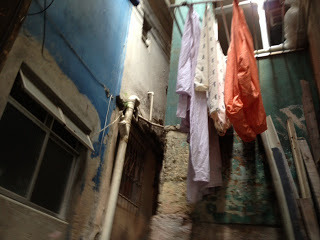
Economist Adam Smith is often cited as the god of free market capitalism, mostly by people who have not actually read his work. The Wealth of Nations is nuanced and subversive and morally critical of the injustice and inequality that can come out of an uncontrolled market system.
One of my favorite Smith quotes from The Wealth of Nations: “All for ourselves and nothing for other people, seems, in every age of the world, to have been the vile maxim of the masters of mankind.”
In many ways this as true now as it was when he wrote it in 1776. But positive steps forward in places like Rocinha show that it doesn’t have to be that way forever. Another world is possible.
Published on February 03, 2013 08:40
No comments have been added yet.



